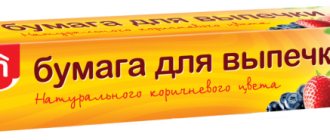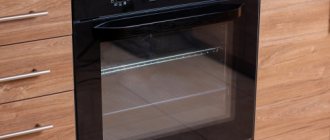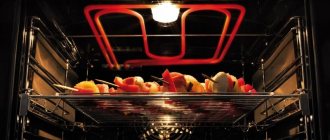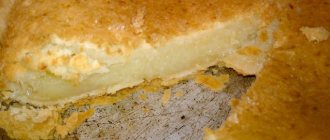Here you will learn:
- What is convection
- Convection heaters
- Types of convection heaters
- Advantages and disadvantages of convectors
- How to choose convector heaters
An impressive abundance of heating devices allows you to solve any problem of heating rooms for any purpose. In recent years, convectors have invaded their orderly ranks. They allow you to warm rooms with hot air, using electricity or thermal energy of the coolant. In this review, we will look at what a convection heater is, how this equipment works, and what advantages and disadvantages it has.
Convection in the oven: what is it?
The word “convection” itself comes from the Latin convectio, which literally translates as “delivery.” Convection is a special type of heat exchange process, the transfer of internal energy occurs in directed jets. Previously, in our kitchens there were standard ovens that were almost no different from each other. The bottom was equipped with a double bottom, inside of which the burners were located. After the oven had warmed up, baking trays with baked goods could be placed in it. The top of the pie or roast goose was browned only due to the movement of heated air masses. At the same time, a fairly common case is when dishes are unevenly baked or burnt. Sometimes I had to turn the pan over, risking ruining the dish.
Modern technology makes the work of housewives easier
In modern kitchens today, ovens with a convection function are increasingly found. In most cases, they have two or more heating elements on the top and bottom. But even in such models, food sometimes burns and is not cooked through. So what is it - convection mode in the oven? After all, the quality of cooking depends on it.
Convection is the process of movement of thermal masses inside the enclosed space of a cabinet. The attentive reader will definitely understand that even in the old type of technology it is necessarily present, since this process is absolutely natural. The movement of thermal energy allows food to bake faster. How uniformly and efficiently this happens is another question. Manufacturers of modern technology are trying to solve this problem.
Soviet ovens served well for decades
Why is convection needed?
It is difficult to overestimate the advantages of the convection mechanism in an electric oven or other device. This technology is provided in most modern household ovens. First of all, it is indispensable when baking large pieces of meat, pies, making pizza, grilled chicken or toast.
Convection promotes uniform cooking of the dish, with its help you can avoid burning in one part of the dish and inadequate baking in another. Previously, to do this, you had to constantly turn the sheet over and change the position of the dish on it. The technology allows you to cook large pieces of fish or whole meat. In addition, convection adds a number of advantages:
- rapid warming up of cold air, accordingly, saving time to obtain the desired temperature;
- the appearance of a crispy crust, the ability to dry out an overly juicy dish;
- possibility of simultaneous preparation of several dishes;
- in the presence of moist convection, food is partially steamed, retaining more beneficial properties and minerals.
Principle of operation
The operating principle of convection is based on an active heat exchange process, which is achieved using a powerful fan located on the rear wall of the heating chamber. It accelerates the movement of air flows, thereby facilitating rapid heating of the oven volume.
Types of convection
Convection is classified according to various criteria. The complexity of the system comes first. It happens:
- simple – represented by several fans;
- complex - heating elements are equipped with built-in fans.
It is not very convenient for an ordinary user to use such a classification. The division based on the operating principle looks much clearer.
- Natural. Air mass transfer occurs. The operating principle is based on the laws of physics. Heated air rushes up, cold air goes down
- Forced. This principle is used in all modern electric stoves. Cheap products are equipped with only one fan. Expensive models have reinforced instruments. They are considered the most effective for cooking. In addition to creating powerful, uniform heating, they are capable of maintaining the required temperature for a long time.
- Wet. A new model that has not yet become widely popular. Creates fine steam in an electric oven. It improves the rise of baked goods. The food will never be dry.
Good to know! The wet type allows you to cook food without adding oil. It is simply impossible to fry the dish.
Natural
It represents the usual distribution of thermal air flows and is not an additional option. In other words, such convection is present in every oven. It functions according to the usual physical principle. Warm air rises when heated, and cold air sinks. This leads to natural circulation of currents inside the oven. You won’t have to pay extra for this option, since it is not the “fruit” of engineering intervention, but it is this convection that is considered the least effective.
Gas convection boilers: what are they and what is the principle of their operation
Gas convection heating boilers are a classic, simple design where a gas burner burns gas, heating a heat exchanger with coolant located above it, the coolant circulates through the heating system and gives off heat. In fact, these are ordinary, simple, well-known gas boilers. They can be either floor-mounted or wall-mounted, single-circuit or double-circuit, and have an open or closed combustion chamber.
The operating principle of a classic atmospheric gas convection generator.
The main disadvantage of this design is the efficiency limit. Most modern convection boilers have an efficiency in the range of 88-92%, and models with the highest efficiency of 93-94.5% are not always justified from a financial point of view, because with an increase of only 2% they have a much more complex design and cost 1.5-2 times more expensive. But even with such high rates for convection boilers, a huge part of the heat from the combustion chamber leaves through the chimney and remains unused. The temperature of the exhaust gases often reaches 70-80-90°C.
In addition, little known before purchase, but an unexpected and frequent drawback during operation is the formation of condensation in the chimney. It usually forms during low-temperature heating conditions, when the temperature of the gases exhausted through the chimney drops below 50-60°C, especially if the gases are removed through a traditional, vertical chimney, the design of which often allows deviations from SNiP.
The formation of condensation in this case means not just liquid, but a mixture of serious acids that shorten the service life of the chimney and boiler heat exchanger (if it gets inside it).
On a coaxial chimney, regardless of the heating temperature, when the outside temperature is below -15°C, ice often forms, which narrows or completely blocks the exhaust of combustion products, as a result of which the boiler stops burning, and the automation displays the corresponding error.
Otherwise, this is a completely justified, simple, and most importantly - financially affordable design. The cost of convection-type gas boilers starts from 14-15 thousand rubles for the most primitive domestic floor-standing models. The best in terms of price-quality ratio and the most popular models cost between 25-32 thousand rubles.
Advantages and disadvantages
| Advantages | Flaws |
| Simpler design | Limited efficiency - the heat obtained from gas combustion is not accumulated efficiently; a fairly large part of it goes into the chimney |
| Affordable price - starting from 14-15 thousand rubles. | Formation of condensation on the walls of the chimney, which reduces the service life of metal modules |
| Availability of non-volatile models and, in general, a wide selection to suit any features and price budget | When discharged through a coaxial chimney, most of the condensate is still discharged to the street, but in severe frosts it freezes on the head, making it difficult to remove combustion products |
| Wide functionality, the same as condensing models, but at a much lower price | |
| Simplicity of installation and operation - only return and supply lines are the main communications, it is enough to carry out scheduled maintenance |
How does an oven with convection function work?
Having dealt with the question of what the term “convection” means in an oven, let’s move on directly to the structure of the device. So, this one differs from a regular oven by the presence of a fan, which is called a convector. It is this that moves the hot air.
The convector can be:
- simple;
- complex.
The first one performs only the function of blowing, while the complex one complements the equipment with additional functions:
- providing additional heating due to the presence of a heating device - heating element;
- fast cooking due to the built-in amplifier;
- Possibility of steaming food in the presence of a steam generator.
Thus, the forced convection mode is necessary if you often cook in the oven or like to bake.
Having selected the desired mode and turned on the timer, you can go about your business
Most modern ovens are also equipped with an electronic display that shows the current time, baking time, and the selected mode icon.
Advantages and disadvantages of convectors
Before choosing and purchasing suitable convection heaters, you should familiarize yourself with their pros and cons.
Advantages:
- Compactness is a rather important quality for modern technology (gas convectors don’t count; they can hardly be called compact);
- Relatively fast heating - in some models it is accelerated due to forced convection;
- Environmentally friendly - convection heaters do not burn oxygen and have little effect on air humidity;
- Fire safety - to a greater extent this plus applies to water units, to a lesser extent to gas ones.
Flaws:
A convector can cause a draft in your home.
- Low efficiency in rooms with high ceilings - the maximum permissible ceiling height is 3 meters ;
- Convection heaters often create drafts - the most sensitive people feel them;
- A large temperature difference between the top and bottom of the room is what causes cold feet for some people.
Despite certain disadvantages, convection heaters remain popular heating equipment.
Oven convection mode icon and other pictograms
Already in the store, one cannot help but notice on the equipment panel various icons that indicate a functional range. It’s not difficult to guess what exactly the icon means. Thus, the dashes indicate the heating elements, the teeth indicate the grill function, and the convector is drawn as a fan. By setting the desired mode, you can either fry the dish or make the crust crispy. Below is a description of the icons, among them in the photo is the convection icon in the oven.
All functions with explanation
How to use the option?
Detailed instructions for using the oven are included with each electric stove, but there are several rules that experts in household kitchen appliances recommend taking into account:
- The option does not require preheating the oven. Advance heating to a certain temperature may be required when preparing dishes that require this, for example, meringues, bread, soufflé.
- Using a convector means that baking and baking occurs at higher temperatures. Therefore, when setting the mode, you should make an adjustment of 20-25 degrees downward.
- When dishes occupy the entire usable area of the oven, the cooking time increases when the convector is turned on. This is due to the fact that there is no space for free air circulation.
- Different foods take different times to cook. Be sure to monitor this and remove the baking sheets before the dish burns.
- The convector allows you to cook frozen foods without defrosting. The main thing is to initially preheat the oven for 20-40 minutes.
If you follow these simple rules, using the option will be a pleasure.
How the convection mode is used in practice
In practice, the convector allows you to achieve amazing results. Thick pieces of meat and fish are baked with high quality and get an even crispy crust on all sides. The dish turns out moderately juicy. The mode significantly simplifies the process of preparing complex dishes, while saving energy consumption (gas or electricity).
Convection mode indicators
The main differences between wet convection, enhanced and dry
- Wet circulation. With this technology, in addition to the usual heating of the air, it is also actively saturated with moisture. This makes this convection ideal for steaming dishes.
- Increased circulation. The main detail in this case is a reinforced powerful fan. Perfect for those cases when you need to achieve a crispy crust on the surface of the dish.
- Forced dry circulation. In this case, the oven contains several fans, which also often have additional heaters.
The most useful programs
- Normal convection. Used for heating dishes, preparing dough before baking, drying herbs, berries and fruits.
- Convector, bottom heater and grill. This is the optimal mode for cooking semi-finished products.
- Convector and bottom heater. This mode is ideal for baking pizza, pies, and bread.
- Turbo grill. When this mode is turned on, the top heater, convector and grill are activated immediately. Good for cooking large pieces of meat.
All of these modes, except regular convection, should be used for a baking tray set at the same level.
Double convection
There are also models on the market with two convectors installed simultaneously. The main brand that produces such ovens is Samsung. The presence of two fans allows you to distribute and warm up the air masses much more efficiently.
Before purchasing equipment with this function, you should make sure that such a choice will be justified. The presence of this function significantly increases the cost of the equipment. The choice is appropriate if you plan to regularly prepare dishes in this mode.
Application of humid convection
Ovens in wet convection mode are used for steaming various meat, vegetables and other dishes. The design of ovens with a similar mode consists of the following elements: a fan, a special container for water and a generator that converts water into steam.
Nuances of fan operation and shutdown
In electric ovens, the convection fan turns on during preheating, even if you are not using convection cooking. We wrote about connecting a gas stove with an electric oven here.
In gas stoves it does not turn on during this period. During convection cooking, the convector will typically run for about 10 seconds, then turn off for about 40-60 seconds. The working cycle of the convector in different modifications may vary, for example, work and rest for an equal amount of time.
Ways to turn off the fan
Because there are many different models of convection fans, the process for turning off the fan may vary.
Method #1 - turn off convection
Turn off the convection option . Some oven models have the ability to turn off the convection function. The fan turns off automatically.
Method #2 - open the door
In the design of many models, when the oven door is opened, the fan immediately turns off. It will turn on again when the door closes. To turn off the convector, open the oven door during cooking.
Method #3 - Cool the oven
Turn off the oven and let it cool. During cooling, the fan may remain on for a while. It will eventually turn off.
A tangential cooling fan is also called a diametrical fan. It creates a uniform, flat flow of cooling air. The fan performs double movement of the air flow perpendicular to the axis of the rotating impeller
The cooling fan is supposed to run until the oven cools down.
Method #4 - Switch Oven Settings
If you have a combination oven with a conventional oven, switch the setting to normal operation. If the oven is a combination oven, changing to the normal setting according to the manufacturer's instructions will usually result in the fan turning off.
How to choose convector heaters
In houses and buildings without gas supply, we recommend using electric heaters - they are easy to install and operate. If you need to make a provision for the future, you can install water appliances with an electric boiler, and to reduce costs it is best to replace the electric boiler with a solid fuel or gas model (configured for the use of liquefied gas).
Gas convection heaters are designed to work in gasified buildings, but they can be easily converted to work with bottled blue fuel. This way you can save money in your wallet. With the advent of the pipeline, it is possible to rebuild the equipment to work with conventional natural gas.
Safety of installation and operation
All models of gas ovens have several systems that ensure safe operation. So, the door glazing is made multi-layered so that the scalding temperature does not reach the outer surface of the door. So that even a child looking through the “porthole” at a chicken rotating on a spit will not get burned. He will not be able to participate in controlling the oven and opening the door, thanks to the lock.
In addition, as mentioned above, heat is removed from the surface of the oven by an internal electric fan.
The control panel of a gas device is much simpler than that of an electric one. In addition to the timer (1), the panel contains a temperature regulator (2) and a mode switch (3). Power on indicator (4)
The gas supply is blocked automatically if:
- the burner goes out accidentally;
- a gas leak occurs;
- The pressure in the gas line drops.
To install a gas oven, you must invite a specialist. He will not only safely connect the gas, but will also check the compliance of the technical device with the type of gas (natural or liquefied) and, if necessary, replace the nozzle.
Additionally, it is necessary to install exhaust equipment. To connect to the electrical network and gas, you need to contact specialists.
The electrical outlet must be of the correct type and must be grounded. In addition to the above, it is necessary to take measures to ensure free access to the oven and its removal. Therefore, it is important to properly prepare the place.
Differences between condensing gas boilers and convection boilers
Condensing gas boilers differ from convection boilers only in the more complex principle of heat accumulation.
The operating principle of conventional convection (efficiency 88-94%) and condensing (efficiency 103-115%) gas boilers.
Condensing models have the same design, but with one more additional heat exchanger. After combustion, the combustion products undergo a longer exhaust path, where they are cooled to the dew point. Condensation forms, which settles on the additional heat exchanger and gives it (and therefore the coolant circulating in it) previously unused thermal energy. Hence the corresponding name - condensation - accumulating heat from exhaust gas condensate.
Thus, the temperature of the exhaust combustion products is almost equal to atmospheric (usually 25-40°C versus 60-90°C for convection models). The efficiency of condensing models is usually in the range of 103-115%, which means on average 15-25% less gas consumption. If we recalculate the indicators of both convection and condensation not according to the lower (as is customary), but according to the highest calorific value (including the heat of condensing water vapor), then the efficiency of conventional gas boilers will be in the range of 80-85%, and of condensing boilers - 92-98% , which is a significant advantage.
All the differences, selection criteria and operating features of condensing gas boilers
The exhaust of condensing models is more environmentally friendly; condensation no longer forms on the head of the chimney, due to the lower temperature difference between the exhaust gases and the atmosphere. All models have an exclusively closed combustion chamber and a coaxial chimney, which means lower space requirements and simplified installation. But the cost of condensers is 2-3 times higher; the most budget models such as BAXI Duo-tec Compact or Protherm Lynx MKV cost from 50 thousand rubles.
There is another significant drawback - the need to drain condensate. As already mentioned, this is not just a neutral liquid, but a strong acid that must be properly removed. You cannot pour acid directly into the sewer; before doing this, it must be diluted in a ratio of 10:1, or preferably 25:1.
An example of condensate drainage and neutralization.
Condensate must also be neutralized when drained into a septic tank; this is done using a local treatment station - a plastic tank with neutralizing fillers. According to reviews from owners, 25-40 liters of condensate are formed per day when a boiler with a power of 18-24 kW is operating.
Tips and tricks
Using this option is very simple and convenient. Each model of electric stove has its own detailed instructions that will help you understand all the intricacies of operation.
But still, we have some useful recommendations for you that will definitely come in handy.
- To use the additional function of convection, the oven does not need to be preheated. This only needs to be done if you are preparing meringues, bread, or if the recipe for a certain dish requires it.
- Please note that during convection operation the oven operates at a very high temperature. Therefore, this should be taken into account when setting the usual mode. For example, if the recipe requires you to bake a dish at 250°, then with convection you should set the temperature 20-25° lower. That is, not 250°, but 225°.
- If you are baking a large dish, for example, a pie, which takes up as much of the usable space in the oven as possible, then you need to increase the cooking time. This is because there will be no room for free air circulation in the inner chamber, so the dish will take longer to cook.
- Thanks to this option, you can cook frozen food without first defrosting it. Just preheat the oven for 20 minutes and then start cooking.
Sources
- https://HomeMyHome.ru/konvekciya-v-dukhovke-chto-ehto-takoei.html
- https://hoznauka.ru/tehnika/konvektsiya-v-duhovke.html
- https://homeasking.com/chto-takoe-konvekciya-v-duhovke-elektricheskoj-plity/
- https://superarch.ru/texnika/chto-takoe-konvekcziya-v-duxovke-elektricheskoj-plityi
- https://tehnika.expert/dlya-kuxni/duxovka/dlya-chego-nuzhna-konvekciya.html
- https://sovet-ingenera.com/gaz/equip/chto-takoe-konvektsiya-v-gazovoy-duhovke.html
- https://stroy-podskazka.ru/plity-kuhnya/elektricheskie-plity/konvekciya-v-duhovke/











